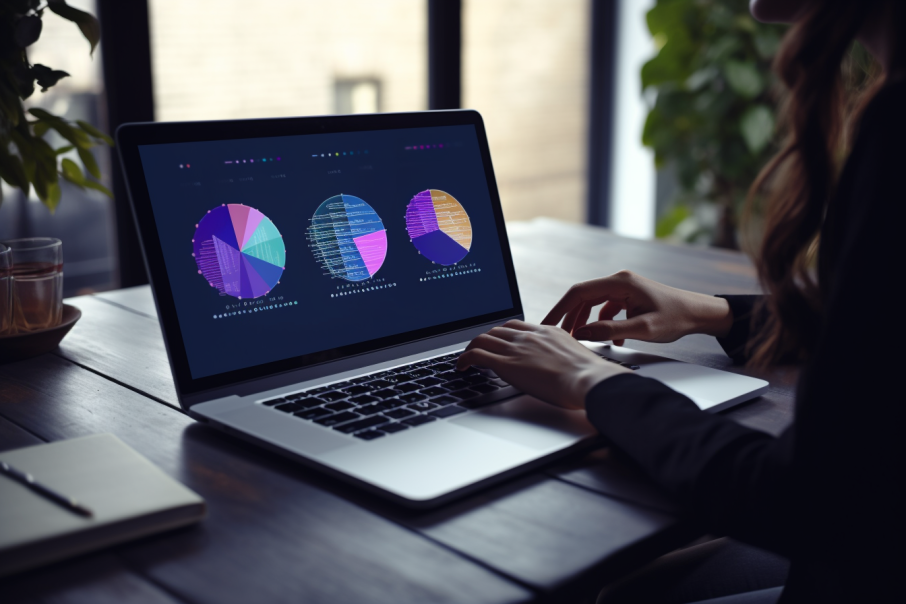
Leveraging Big Data for Small Business Success: Strategies and Tools
Data is becoming more important than ever, especially when it comes to staying ahead of the competition. Therefore, leveraging big data can help your small business succeed in an increasingly competitive market. With the right strategy and toolset, you can gain valuable insights into customers’ behaviors, preferences, and interests – giving you the power to make informed decisions that drive revenue growth.
In this article, we’ll explore effective ways to leverage big data for your small business’s success!
Understanding Big Data: Basics and Benefits for Small Businesses
As a big data strategist, one of the most important things I’ve learned is that leveraging big data for small business success requires understanding the basics and benefits of this technology.
Data security, predictive analytics, cloud storage, data mining, and data visualization are just some of the elements involved in working with and managing large datasets. With these techniques, small businesses have access to powerful insights they may not have had before. These insights can go a long way in helping them stay competitive and succeed.
Data security is especially important when it comes to protecting confidential information. It is also important to prevent unauthorized intrusion into sensitive areas such as customer accounts or payment records.
Predictive analytics makes it possible for small businesses to identify patterns from past performance. These patterns can be used to anticipate future outcomes.
Cloud storage allows easy backup and retrieval of documents without having to manage huge amounts of physical space or hardware.
Data mining provides an efficient means for identifying trends or issues within large databases quickly and accurately.
And finally, data visualization helps create meaningful visual representations out of complex datasets. This is so that even non-technical personnel can make sense of their findings.
Small business owners who take advantage of this wide array of tools will find themselves better equipped to make decisions based on informed analysis rather than guesswork alone – giving them an edge over those who don’t utilize big data strategies effectively. As such, they are more likely to come away with successful results regardless of external factors beyond their control.
Essential Data Collection Techniques and Tools for Small Business Owners
For small business owners, collecting data is key to success. With the right strategies and tools in place, your company can gain invaluable insights into customer behavior.
In order to do this effectively, you should focus on the following:
- Data privacy: Ensure that all collected data remains secure by investing in database security systems.
- Predictive analytics: Utilize predictive analytics to anticipate trends and plan ahead. This will help you stay competitive in a rapidly changing environment.
- Customer segmentation: Identify different segments of customers based on their characteristics and behaviors so you can tailor your marketing campaigns accordingly.
- Data visualization: Use visualizations such as charts, graphs, and dashboards to represent complex data in an easy-to-understand way.
By leveraging these essential collection techniques and tools, small business owners can easily access valuable insights. Through proper data privacy protection measures, predictive analytics capabilities, and customer segmentation analysis backed up with powerful visuals; businesses are able to craft better strategies that lead to increased sales and improved bottom lines.
Ultimately, smart utilization of big data offers great potential for any business looking to grow or improve its performance.
Implementing Data-Driven Decision-Making: A Step-By-Step Guide for Small Businesses
When it comes to small businesses, big data can seem like an insurmountable challenge. But don’t be fooled – leveraging big data for success is actually surprisingly simple! In fact, with the right strategies and tools in place, you’ll be able to unlock powerful insights from your data.
Analyzing metrics, predictive analytics, automated processes, customer segmentation, and data visualization are all essential components of a successful implementation of data-driven decision-making.
Start by determining your key performance indicators (KPIs), analyzing past trends, and discovering new opportunities within your data sets. Once you have identified meaningful patterns in your data, use predictive analytics techniques such as machine learning algorithms to identify future trends and optimize operations.
Automate processes so that manual tasks become repeatable actions that save time and money while increasing efficiency. Then take advantage of customer segmentation to direct marketing campaigns toward specific audiences based on their preferences or behaviors.
Finally, make sure to utilize effective visualizations of this information so that stakeholders can understand what’s happening at a glance.
Using these steps as a foundation for understanding how best to leverage big data for small business success should provide valuable insight into where improvements may need to be made. No matter if it’s process optimization or pinpointing market needs more effectively through customer segmentation.
Hopefully, this guide has laid out some useful strategies and tools when approaching complex datasets.
Key Performance Indicators (KPIs): How to Measure and Monitor Your Small Business Success
As a big data writer and strategist, I’m always looking for ways to help small businesses measure and monitor their success. Key Performance Indicators (KPIs) are an essential part of that process. They allow us to track ROI, identify trends, analyze customer segmentation, and uncover new opportunities with predictive analytics – all while using visualizations to make the analysis easier to understand.
When it comes to KPIs, there’s no one-size-fits-all solution for every company. You’ll want to pick metrics based on the goals you’ve set for your business. This way, you can properly assess how well those goals have been met.
Additionally, if you’re not sure which metrics will provide the most accurate assessment of performance, data visualization tools can help. They can display different types of information in graphical formats like charts or graphs. This makes it much simpler to spot patterns or correlations within your data sets that might otherwise go unnoticed.
Using KPIs as part of your overall strategy is a great way to keep tabs on how successful your small business is at meeting its objectives. By tracking these indicators regularly and gaining insights from the data they generate, you’ll be able to make more informed decisions about where best to invest time and money in order to ensure future growth and success.
Case Studies: Real-World Examples of Small Businesses Thriving with Big Data Solutions
The potential of big data for small business success is undeniably huge. But unfortunately, many businesses still don’t know how to make the most out of it. That’s why case studies are so important – they show real-world examples of small businesses thriving with big data solutions.
Take Irene’s Bakery as an example – a small mom-and-pop shop in the heart of New York City that was struggling to stay afloat amidst fierce competition from large chain stores. With help from a team of experienced strategists, Irene’s Bakery leveraged big data analytics tools to analyze customer trends and identify new opportunities for growth.
By implementing cost-efficiency strategies and using data-driven marketing tactics, Irene’s Bakery managed to increase its sales by over 20% within just six months!
Data privacy concerns may always remain when leveraging big data. However, with careful planning and execution, there’s no limit to what any business can achieve. Smart use of advanced analytics techniques can open up entirely new avenues for growth while also helping keep costs low – something that all small businesses should strive for.
Here are some key takeaways:
- Analyzing customer trends helps identify opportunities for growth
- Data-driven marketing boosts sales significantly
- Cost efficiency strategies ensure long-term sustainability
- Automation and technology can help streamline processes and lower operational costs
Conclusion
Small business owners are increasingly leveraging the power of big data to gain competitive advantages and drive success. In today’s digital world, understanding how to collect, analyze, and interpret data is a key ingredient for small businesses seeking growth and sustainability.
By learning about essential data collection techniques and tools, implementing data-driven decision-making strategies, utilizing KPIs to measure success, and studying real-world case studies on how other successful small businesses have used big data solutions – you can transform your small business into a big player in the game!
It is clear that having an effective strategy around big data can be immensely beneficial for small businesses. With the right knowledge and tools at hand, any small business owner has the potential to reach their goals faster than ever before – so why not get started today?

